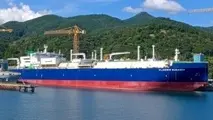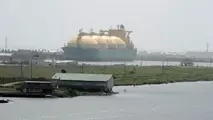Shipping Industry Increasingly Turning to LNG to Meet Clean Fuel Rules
With new global emissions standards looming, the marine shipping industry is increasingly looking at liquefied natural gas as alternative to high-sulfur bunker fuel, shipping and energy executives said at a global gas summit this week.

With new global emissions standards looming, the marine shipping industry is increasingly looking at liquefied natural gas as alternative to high-sulfur bunker fuel, shipping and energy executives said at a global gas summit this week.
Already used to fuel ferry fleets and cruise ships, LNG is gaining traction among freight and cargo shippers, despite a reluctance by the entrenched industry to make major changes. The stakes are high: the global shipping fleet now consumes about 4 million barrels per day of high sulfur fuel oil.
“Ship owners are very conservative, they’re generally a little slower to act… But it’s going to happen,” Peter Keller, chairman of SEA\LNG and executive VP of maritime firm Tote Inc, told Reuters at the World Gas Conference in Washington.
“Every year the percentage of LNG powered ships out of the new-build market is increasing.”
LNG bunker demand from the shipping sector is expected to be between 20 to 30 million tonnes per annum (Mtpa) by 2030, up from less than 1 Mtpa today, according to forecasters.
Driving the shift are new rules from the International Maritime Organization that cut the allowed sulfur content in marine fuel to 0.5 percent from 3.5 percent by January 2020. LNG is virtually sulfur free.
It is the most significant change faced by the global shipping sector in decades, and many in the industry remain divided over what fuels ships will use and how many vessels will simply break the rules.
Keller, whose firm operates LNG container ships and is converting its cargo ships to the supercooled fuel, said the big limitation has been the so-called “last mile of delivery,” a lack of availability of the fuel at port.
But that is changing.
“In 2017, there was only one bunker vessel for LNG anywhere in the world. Today, there are five and 14 more on order,” he said, adding that the vast majority of bunker ports in the world are expected to have LNG capabilities in place by 2020.
Source: Reuters



